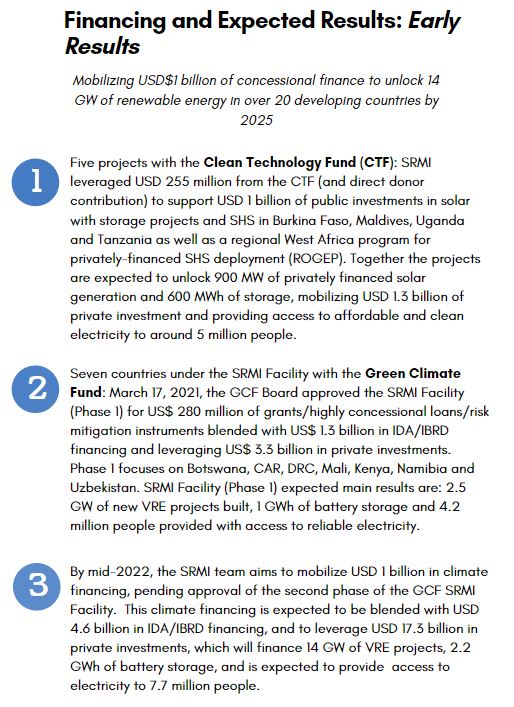
ESMAP's Response
An Integrated Initiative
The World Bank‘s Energy Sector Management Assistance Program (ESMAP), in partnership with Agence Française de Développement (AFD), International Renewable Energy Agency (IRENA) and International Solar Alliance (ISA) launched at COP24 the Sustainable Renewables Risk Mitigation Initiative (SRMI) to address these challenges.
SRMI helps governments develop, finance, and implement sustainable solar and wind programs aiming at:
- Attracting affordable private investments in optimized conditions for grid-connected and off-grid projects.
- Reducing reliance on public finances - limited to critical public investments.
- Maximizing socio-economic benefits such as job creation and gender equality.
The Sustainable Solar Guidelines is the guiding document presenting the SRMI methodology and key steps to be implemented from the government’s perspective.
To mitigate the risks of solar and wind deployment, SRMI offers development and climate financing through a Risk Mitigation Approach.

